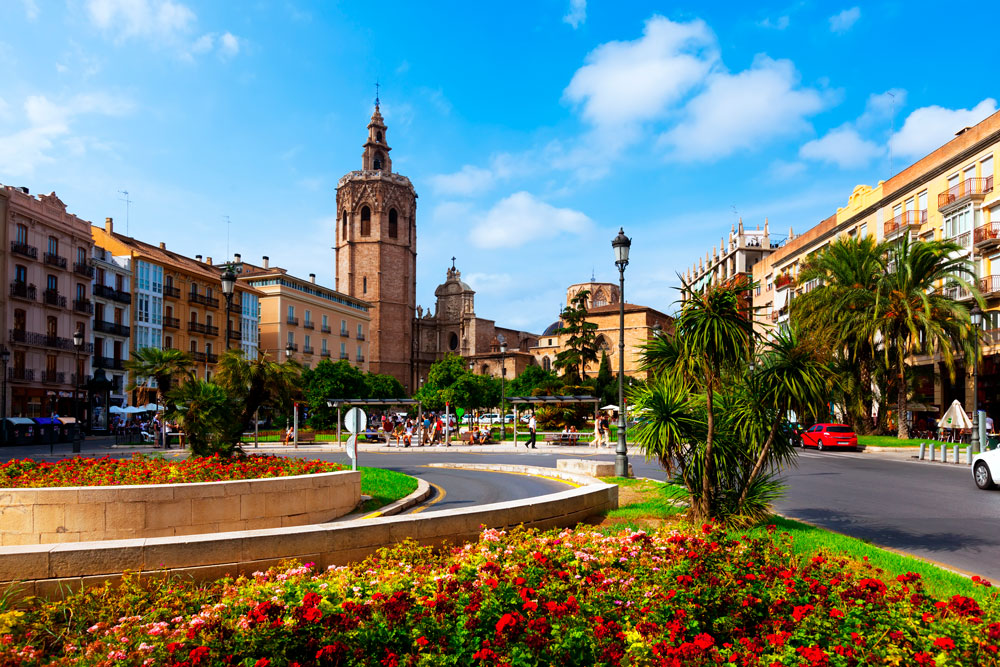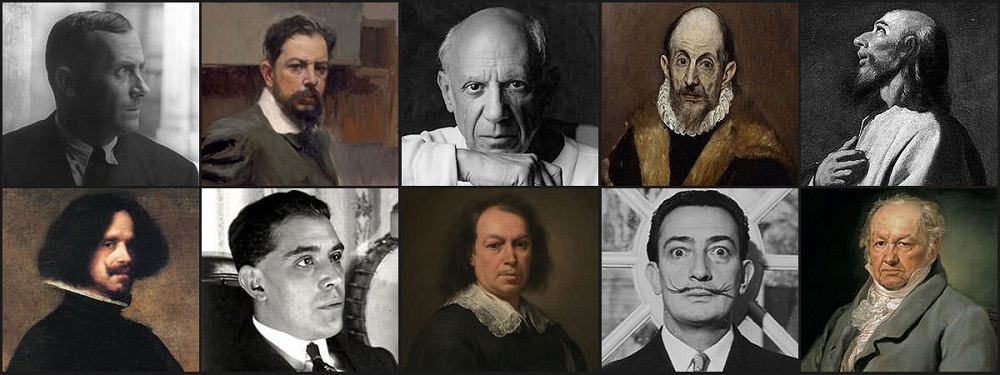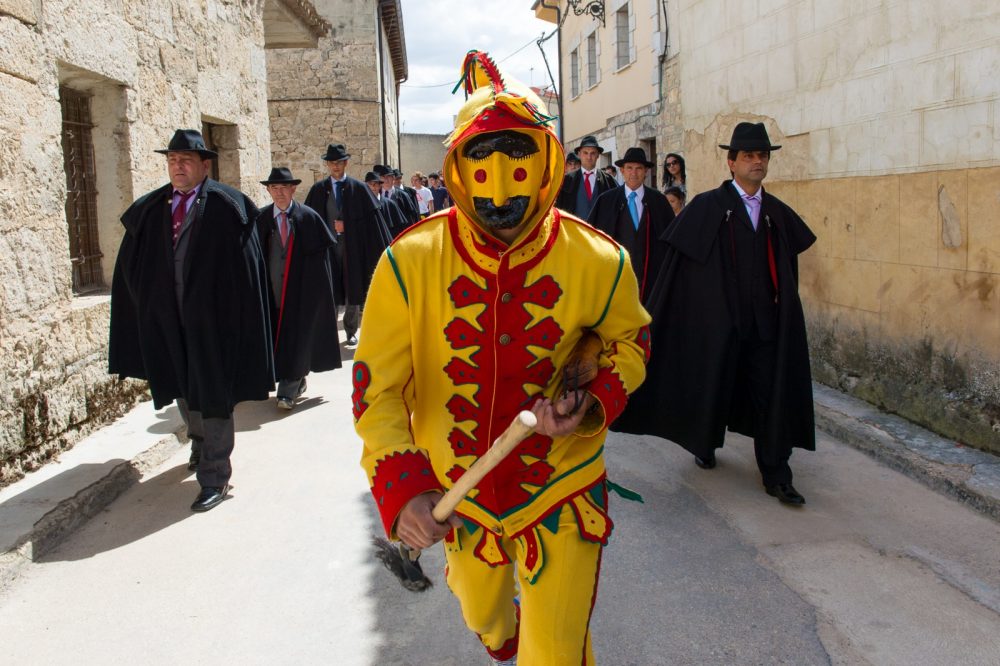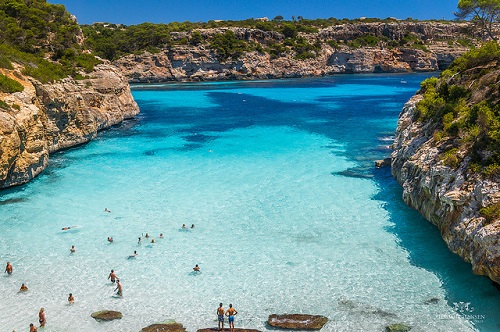Valencia has plenty of attractions and activities to enjoy which attracts tourists to Spain. The city has a rich old center, with a knot of little streets and magnificent medieval buildings. Besides, Valencia, located right on the Mediterranean, so you can enjoy on broad sandy beaches and get amuse the sun brightness and it all goes to make Valencia one of Spain’s perfect complete destinations.
Let’s discover the best attractions to see in Valencia:
1- Bioparc Zoo:
 via – experiencesvalencia
via – experiencesvalencia
Bioparc is the new space for animals opened in 2008, and at the north of the garden of the old course of the River Turia. Most of the animals moved from the old city’s zoo to the new Bioparc. The spot has exhibited millions of visitors to the creative concept of the zoo, called zoo immersion, which comprises of immersing visitors into the animal’s habitat instead of using traditional cages and enclosures.
Furthermore, Bioparc uses rivers, ponds, streams, rocks, plants and glass to separate visitors from the animals creates an understanding of how the animals would live in their native environment. Visitors can get amusing, practically without barriers, splendid landscapes in which different species co-exist as they are in nature.
Moreover, Bioparc is strongly devoted to sustainability and conservation; many of the genuses at the zoo are included in European conservation breeding programs. It recycles more than 95 percent of the water used as well as generating energy to heat water using a large number of solar panels through the zoo.
2- National Ceramic Museum:
 via – wikipedia
via – wikipedia
Valencia is well known for its traditional ceramics, and the National Ceramic Museum is probably the best place in town to involve yourself in the city’s elaborate history and process of ceramic making.
The National Ceramics Museum accommodated in a palace that dates from the 15th century and renovated in 1740 on rococo style with an impressive alabaster entrance. Inside, you can find the 18th-century carriages, the 19th-century rooms, antiquated ceramics and a significant collection of tiles made in the Royal Ceramics Factory in Alcora.
Besides, the principal door is on one side of the house and is crowned by a statue of the Virgin Mary, from which two streams of plentiful water flow, presenting the Júcar and the Turia rivers. Additionally, The Gonzalez Martí National Museum of Ceramics and Sumptuary Arts includes an historic collection of ceramics, with prehistoric, Roman, Greek and Arab items. There are also plenty of contemporary works, including some by Picasso
3- Valencia Cathedral:
 via – sygic
via – sygic
The Gothic Cathedral is the most significant religious building and its tower, “el Miguelete”, in Valencia City.
At first, The Cathedral was built as an earlier mosque and was begun in the 13th century, with many transformations and additions before it was finished in the 17th century. Besides, Gothic is clearly predominant, although it mixes several architectural styles. One of the most beautiful elements inside the Cathedral is the Capilla del Santo Cáliz (the Chapel of the Holy Chalice) and former chapterhouse, with its pretty star vault, an image of heaven with the 12 Apostles and the Coronation of the Virgin.
Imposing features of the cathedral’s exterior are: the first is the Puerta del Palau, it’s the oldest entrance, in the Romanesque style with Mudéjar elements. The second is the Puerta de los Apóstoles (14th century). This is where the Water Tribunal occurs every Thursday at noon. And it still meets and administers justice today. In 2009, UNESCO awarded it Intangible Cultural Heritage status.
Valencia Cathedral at the center of the old town of Valencia an area called El Carmen. The Cathedral joins two of El Carmen’s most iconic plazas which are the Plaza del la Reina and the Plaza del Virgen. The Cathedral itself is a magnificent structure that bridges a variety of architecture styles, including Romanesque, baroque and gothic.
4- Valencia Central Market :
 via – devourtours
via – devourtours
One of the most typical places, which merges architecture and high quality products, it is the Central Market in Valencia. It is based on historical area, formed by La Lonja and the symbolic church of Santos Juanes.
Central Market has a total of 8,160 square meters dedicated to fresh products which are divided into fish area and luxury cheese from the region and ecological products from the Valencian agriculture.
5- Turia Gardens:
 via – tripkay
via – tripkay
Turia Gardens is one of the greatest urban parks in Spain. It runs throughout the city along nine kilometers of green space boasting foot paths, sports areas and leisure. Besides, the Turia Gardens are the perfect place for runners, cyclists, families and nature enthusiasts.
The gardens were launched in 1986. Besides, the Bioparc and Cabecera Park border the huge gardens to the west, and the City of Arts and Sciences border it on the opposite side, near the mouth of the river. Furthermore, the Turia Gardens connect a realistic-looking African savannah in the Bioparc with the underwater world and ecosystems you can visit in the Oceanogràfic, and the magnificent opera auditorium and Palau de les Arts held in the City of Arts and Sciences.
The Turia Gardens are spanned by 18 bridges from different periods and architectural styles the oldest bridges are the Trinidad (15th century), Serranos (16th century), El Real (16th century) San José (17th century), and El Mar (16th century). More recent bridges are 9 d’Octubre, the Puente de la Exposición, , the Ángel Custodio bridge, the Las Artes bridge, next to the IVAM (Valencian Institute of Modern Art), and Las Flores and l’Assut d’Or. All of these are located on the former edges of the Turia, which serve as a guide for an impressive cultural itinerary in the city of València.
6- The City of Arts and Science:
 via – travelingmom
via – travelingmom
The City of Arts and Science refers to a group of futuristic buildings was built by local architects called Santiago CALATRAVA and FÉLIX CANDELA, this city includes six buildings:
HEMISPHERIC: has been constructed to be like a giant human eye.
The Prince Philip Science Museum: its purpose to educate children with a lot of activities and to entertain them.
L’OCEANOGRAFIC: is a small version of sea world they represent dolphins, and it has the biggest glass water tunnel in Europe to walk through.
The other part of the building named L’UMBRACLE and ELPALAN de Les Arts Reina Sofia is great looking opera house and theater.
The last one is L’AGORA which included exhibition space and sports area.
7- Oceanographic:
 via – sworex
via – sworex
The foremost of the City of the Arts and Sciences is this cutting-edge Oceanographic that opened in 2003. The spot contains 45,000 individual animals from 500 different species. Besides, the aquarium is divided into ten zones, each synthesizing a distinct environment, and using real seawater pumped from Valencia’s waterfront. So at the Arctic aquarium you’ll get to see beluga whales swimming in a sizeable and thoughtfully designed tank.
Elsewhere you can spot sand tiger sharks, walruses, penguins, sea lions and dolphins. It all adds up to a day out adults and little guys won’t soon forget.
8- Malvarrosa Beach:
 via –pinterest
via –pinterest
The Malvarrosa beach is the most famous beach in Valencia. It’s close to the city and open space make it a beautiful beach to visit. Besides, Malvarrosa is a wide beach of golden sand that expends for a kilometer along the city’s seafront. Additionally, the beach has been granted the Blue Flag for all the amenities it provides, from a lifeguard towers, a medical station, drinking fountains and showers, to its easily-navigable ramps and footpaths.
Each year the Malvarrosa Beach organizes an air festival that is commemorated directly in front of the boardwalk. Airplanes from around Spain and its army air corps, with planes also coming from other countries to participate in this annual event. Another celebration on the beach is the Neapolitan mascletá, which takes place during the Valencian Fallas in March.
9- Las Fallas:
 via – experiencesvalencia
via – experiencesvalencia
This celebration takes place in Valencia in the honor of St. Joseph’s Day on the 19th of March could be the magnificent and most colorful of any fiesta in Spain. Besides, the city takes all year to prepare for the creation of hundreds of fantastical figures reaching more than 30 feet high to be placed in the streets and finally burned during the festival.
Las Fallas marks the beginning of spring, and in the past the city’s carpenters would organize bonfires on the night before the 19th in honor of their patron saint. Nowadays, it developed into the impressive spectacle you can see today, with something special to see every day. For example, each day at two you can see the La Mascletá, an ear-splitting firework display in the town square. And through the week “Ninots”, huge cardboard sculptures with satirical themes, make their way around the city streets and are eventually burned in the Cremà, massive fires on the night of the 19th.
You certainly have to come to Valencia in March and discover it for yourself. And once you do, you will have a clear idea of what Valencia and its people are all about.
To conclude, Valencia is a fabulous place to visit, and you can enjoy from its beautiful beaches, foods, festivals, and monuments it is fascinating to spend your holiday on Valencia.


 Top 10 Most Famous Spanish Artists and their Arts
Top 10 Most Famous Spanish Artists and their Arts
 El Colacho, the Baby Jumping Festival in Murcia Spain
El Colacho, the Baby Jumping Festival in Murcia Spain
 Discover The Most Beautiful Places In Mallorca, Spain
Discover The Most Beautiful Places In Mallorca, Spain